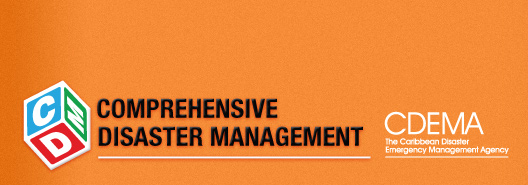
CDM Glossary
There are 29 entries in this glossary.| Term | Definition |
|---|---|
| National Disaster Management Office (NDM |
The NDMO is the government agency with focal responsibility for disaster management in the respective country. It is generally headed by the country’s Disaster coordinator. (Baastel-ESL) |
| National Disaster Organization (NDO) |
The NDO in this document refers to the national organizational structure of agencies linked for the purpose of attending to the legal, institutional and operational aspects of disaster prevention and mitigation, preparedness and response and recovery and rehabilitation. The NDO is generally headed by the Prime Minister or Head of government in the respective country. (Baastel-ESL) |
| Outcomes |
Targets to be achieved in the Medium-term in the results-based framework. Outcomes result from an amalgam of short- term outputs. (Baastel) |
| Outputs |
Short-term Results from activities undertaken toward the medium-term outcome. (Baastel) |
| Preparedness |
Activities and measures taken in advance to ensure effective response to the impact of hazards, including the issuance of timely and effective early warnings and the temporary evacuation of people and property from threatened locations. (ISDR) |
| Prevention |
Activities to provide outright avoidance of the adverse impact of hazards and means to minimize related environmental, technological and biological disasters. Depending on social and technical feasibility and cost/benefit considerations, investing in preventive measures is justified in areas frequently affected by disasters. In the context of public awareness and education, related to disaster risk reduction changing attitudes and behaviour contribute to promoting a "culture of prevention". (ISDR) |
| Programme Based Approach |
A way of engaging in development cooperation based on the principle of coordinated support for a locally owned programme of development. The approach includes four key elements:
|
| Recovery |
Decisions and actions taken after a disaster with a view to restoring or improving the pre-disaster living conditions of the stricken community, while encouraging and facilitating necessary adjustments to reduce disaster risk. Recovery (rehabilitation and reconstruction) affords an opportunity to develop and apply disaster risk reduction measures. (ISDR) |
| Relief / response |
The provision of assistance or intervention during or immediately after a disaster to meet the life preservation and basic subsistence needs of those people affected. It can be of an immediate, short-term, or protracted duration. (ISDR) |
| Resilience |
The capacity of a system, community or society potentially exposed to hazards to adapt, by resisting or changing in order to reach and maintain an acceptable level of functioning and structure. This is determined by the degree to which the social system is capable of organizing itself to increase its capacity for learning from past disasters for better future protection and to improve risk reduction measures. (ISDR) |
| Results Based Management |
Rather than focusing programme/project management efforts on the monitoring of inputs, activities and processes, an RBM approach concentrates on ‘results’ and places emphasis on the following dimensions:
|
| Risk |
The probability of harmful consequences, or expected losses (deaths, injuries, property, livelihoods, economic activity disrupted or environment damaged) resulting from interactions between natural or human-induced hazards and vulnerable conditions. Conventionally risk is expressed by the notation Risk = Hazards x Vulnerability. Some disciplines also include the concept of exposure to refer particularly to the physical aspects of vulnerability. Beyond expressing a possibility of physical harm, it is crucial to recognize that risks are inherent or can be created or exist within social systems. It is important to consider the social contexts in which risks occur and that people therefore do not necessarily share the same perceptions of risk and their underlying causes. (ISDR) |
| Vulnerability |
The conditions determined by physical, social, economic, and environmental factors or processes, which increase the susceptibility of a community to the impact of hazards (ISDR) |
| WCDR |
World Conference on Disaster Reduction |
|
Looking for:
|











